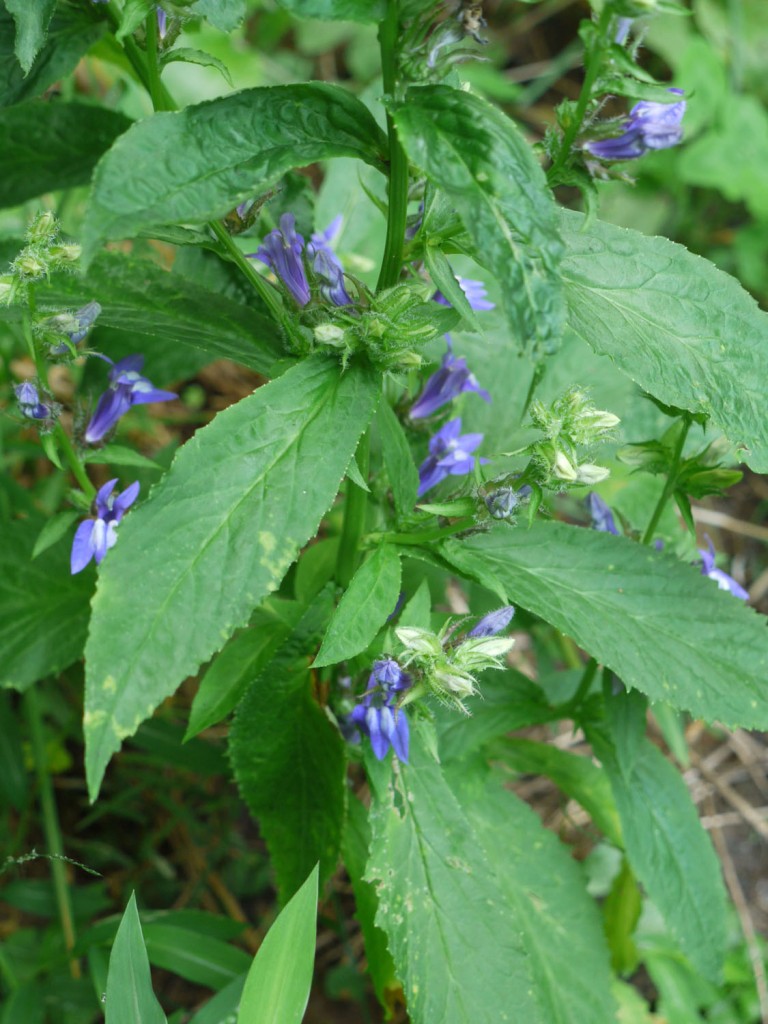 One day I found this Great lobelia (Lobelia siphilitica) blooming along a stream bank. Here’s a closer view of the upper portion of another Great lobelia spike:
One day I found this Great lobelia (Lobelia siphilitica) blooming along a stream bank. Here’s a closer view of the upper portion of another Great lobelia spike:
The unopened flower buds have a puffy look to them. A few weeks later I found this plant in the woods . . .
At first, I thought I had found another Great lobelia — because the flowers were the same blue / purple color atop a plant of about the same height. And the unopened flowers looked puffy.
I returned to this plant a week or so later since I wanted to see the incredible blooms of the Great lobelia again. Here is what I found . . .
Uh-oh, it looks like the flowers were killed by an early frost. Now wait a minute! Those flowers somehow look a bit different from the Great lobelia. Eventually I identified this plant as a Soapwort gentian (Gentiana saponaria).
Now, let’s look at some differences between these two plants. The two photos immediately above show the Soapwort gentian’s fully opened blossoms. These are the fully opened blossoms of Great lobelia:
Quite different, right? Let’s look at the leaves for these two plants. Great lobelia’s leaves grow alternately along the stem of the plant.
The leaves have small serrations along their margins. This is visible in the photo above as well as the next photo.
The above photo also shows how the Great lobelia flowers appear on smaller spikes from the axils of the leaves–in addition to the longer spike at the top of the plant.
In contrast, the Soapwort gentian’s leaves are in a whorl just below the top inflorescence, and they are opposite further down the plant’s stem. The leaf margins are entire — smooth with no serrations.
This final photo shows how the Soapwort gentian flowers grow in a whorl (not a spike) from the leaf axils.









